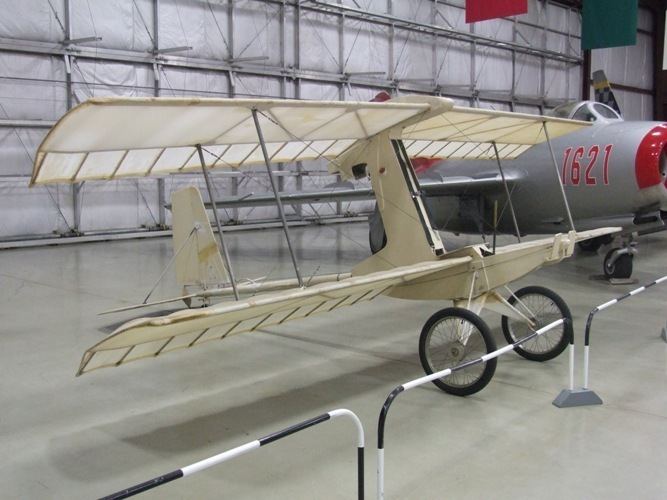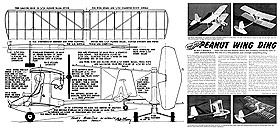First flight February 1971 | ||
 | ||
Manufacturer Vintage Ultralight and Lightplane Association Similar AmEagle American Eaglet, Eipper Quicksilver, Mitchell U 2 Superwing | ||
The Hovey Whing Ding is an extremely minimalist American ultralight aircraft that was designed by Bob Hovey of Saugus, California, first flying in 1971. The aircraft is supplied in the form of plans for amateur construction by the Vintage Ultralight and Lightplane Association of Marietta, Georgia.
Contents
- Hovey Wing Ding II lower wings
- Design and development
- Operational history
- Variants
- Specifications typical
- References

Hovey Wing Ding II lower wings
Design and development

Hovey set out to create the lightest aircraft to carry a person ever to fly, with the resulting design being a biplane, with a plywood box filled with Polyurethane foam serving as the fuselage, supporting the pilot's seat. The aircraft features a conventional fabric-covered empennage carried at the end of a short tailboom made of aluminum tube. The horizontal stabilizer is made from reinforced cardboard. Early versions used wing warping for roll control, while later models used full-span ailerons. The specified pusher configuration powerplant is a McCulloch chainsaw engine turning a hand-carved wooden propeller via a chain drive. The first prototype had a monowheel undercarriage, with skids under the wingtips, but this was soon changed to twin mainwheels carried on a spring-type strut. With no brakes to stop the aircraft after landing, pilots were supposed to press their heels against the mainwheels.

The Whing Ding was designed long before the US FAR 103 Ultralight Vehicles regulations were introduced, but it fully conforms to the rules. The Whing Ding helped generate interest in ultralight aircraft and lead to the ultralight boom of the late 1970s and 1980s.

Hovey conceived of the aircraft as an experimental project and not as a form of transportation. Due to its unreliable powerplant he intended it to only be flown over open areas where a safe landing could be carried out at any time. The plans were complex to follow and were not intended to make construction easy. Construction time typically is about 400 hours.

The Whing Ding was marketed as plans, and sold extremely well - by 1979, over 6,000 sets had been purchased. In 2011 the plans were still available, and at no cost.
Operational history
Depending on the density altitude and the weight of the pilot, some builders discovered that the aircraft was under powered and suffered from too small a wing area to climb out of ground effect.
Variants
Specifications (typical)
Data from Cliche and the Virtual Ultralight Museum
General characteristics
Performance
Avionics
